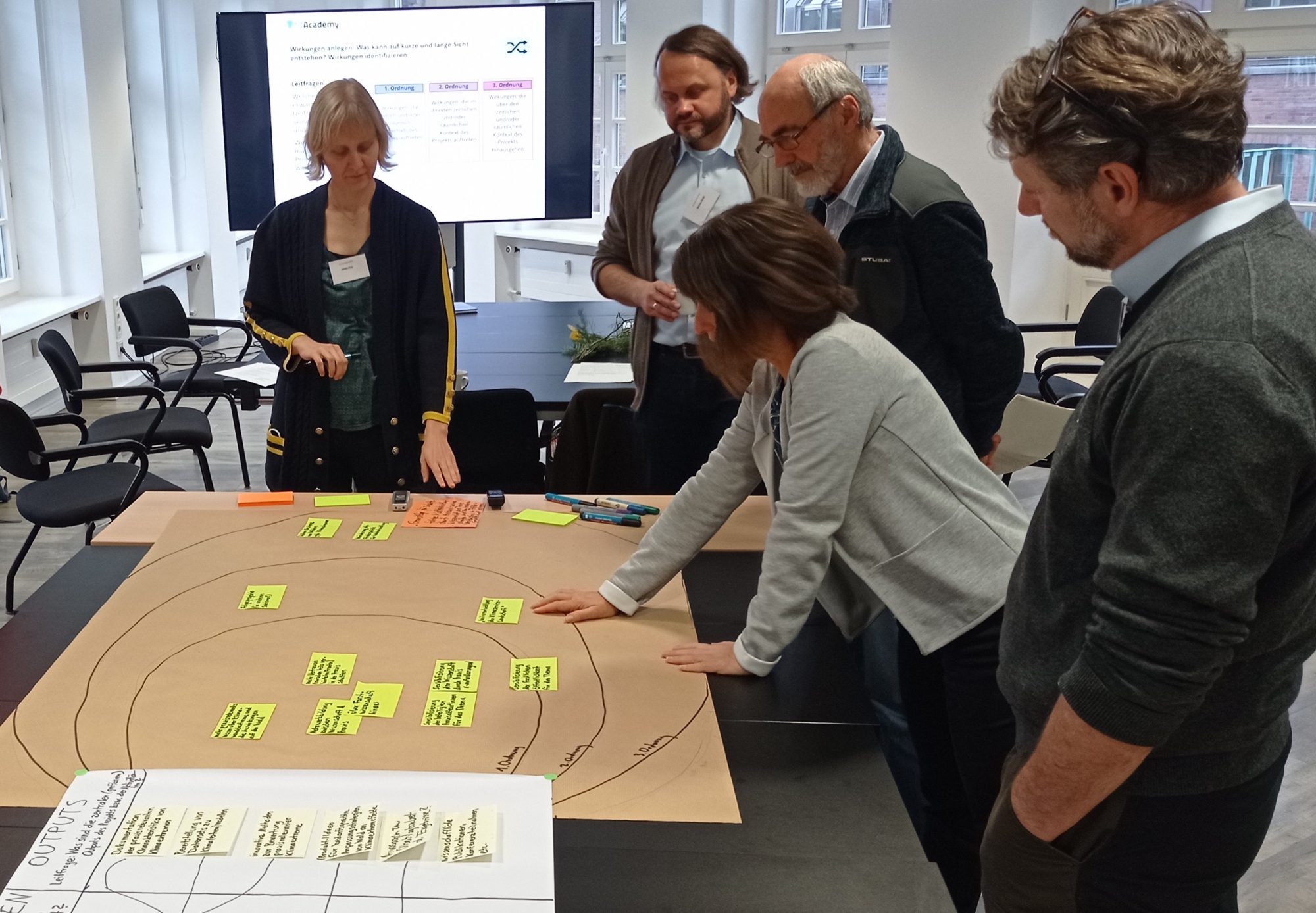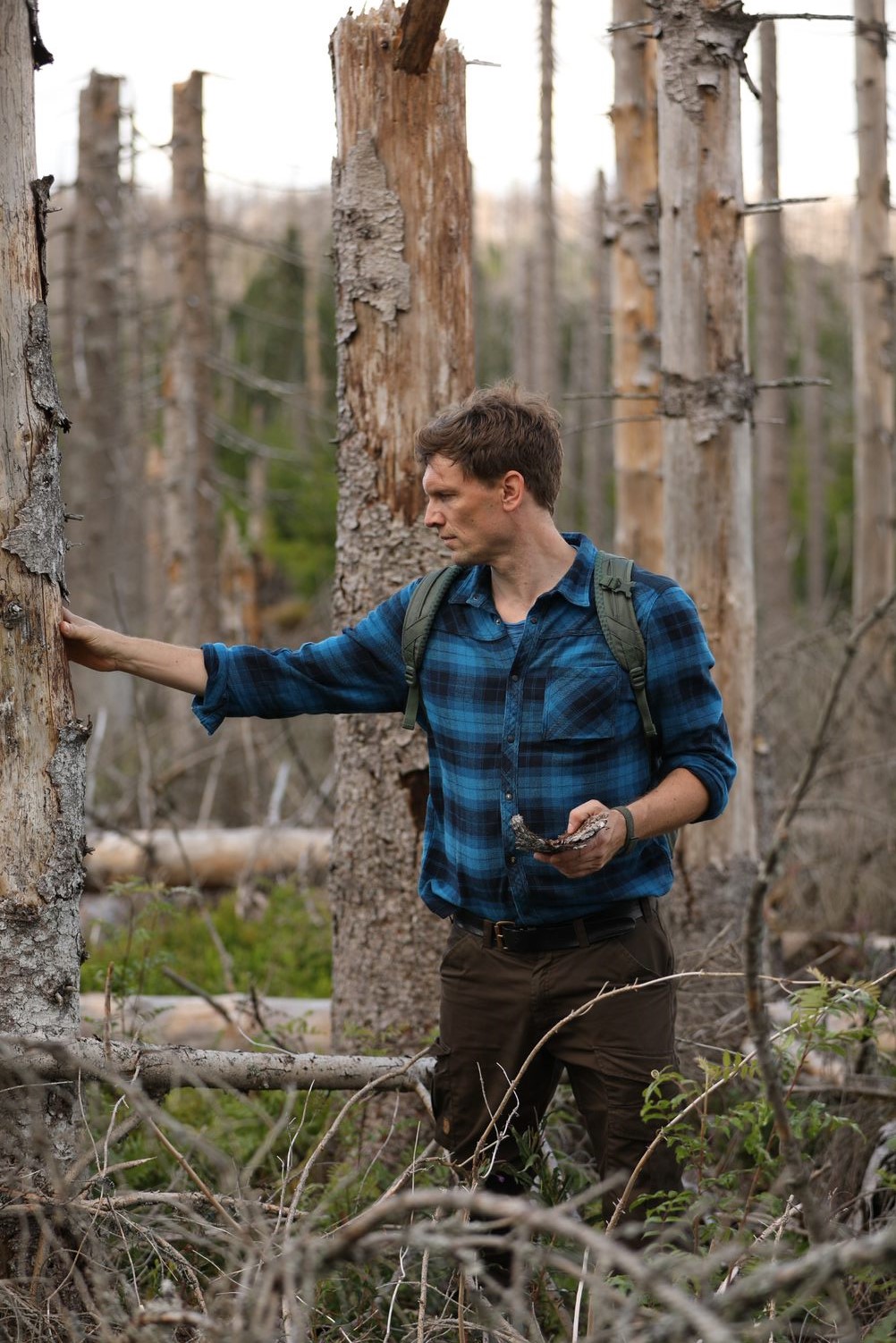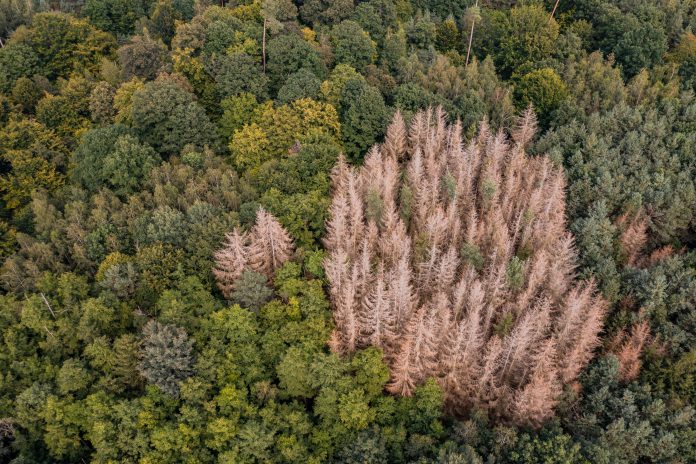Due to the very long rotation times of trees 100 years old or more, the forest sector is being particularly affected by the changes brought about by climate change, especially by the impact of drought
Climate change is causing large-scale forest damage across Europe and there is a high probability that this trend will continue in the medium term (Senf and Seidel 2021, Cook et al. 2022). The challenges are immense, as neither forestry practice nor science has ever had to deal with such a change (Vacek et al. 2023). Regarding adaptation to climate change, there are many different approaches, some of which even contradict each other (e.g. Jandl et al. 2019).
The impact of drought and the creation of targeting climate projects
Due to the very long rotation times of the trees of 100 years and more, the forest sector is particularly affected by the changes brought about by climate change. Consequently, there is a specific need to include climate projections in forest decision-making processes to help make future stands climate-resilient.
At GERICS, we are currently trying to find the special needs in terms of climate information that can support forest managers in these difficult times. We aim to improve the understanding of the climate information needs of forest managers and to determine existing climate parameters that have a special influence on forests. However, the exchange with practice partners is not a one-way street. Based on the expertise of practitioners, we try to understand where science should go to help mitigate these major problems caused by the current climate crisis.

The German forest sector: ClimXtreme
ClimXtreme is a network of different research institutions in Germany with the common goal of advancing research on extreme events in the context of climate change (see here for more information: www.climxtreme.net). In this framework, the CS4eXtremes project investigates the effects of climate extremes on the German forest sector in order to promote the resilience of forest ecosystems in the long term. The basis for this purpose is an intensive exchange with practice stakeholders from the German forest sector. We aim to improve the scientific community’s understanding of how climate information about extreme events is used in their decision-making processes. Following individual interviews and workshops, co-developments with individual key partners are carried out to develop user-specific climate information. The workshops are accompanied by the external partner tdAcademy (a research and community platform for transdisciplinarity, www.td-academy.org), from which we experience a punctual reflection on the effects of our practical dialogue. The results of our research show that climate data and projections are widely used in current forest science but to a lesser extent in forest management practice. Although the awareness of climate change among German foresters is high, they are not in all cases, sufficiently equipped with specially adapted climate information. We also noticed a certain skepticism about the reliability of climate projections.
In addition to these long-term studies, it also became clear that foresters are under massive pressure nowadays. It has been reported that stocks that have been maintained for decades died off completely in a few years. Additionally, the working conditions in the forest have also become much more unsafe due to weakened trees, larger amounts of dead wood in the canopies and heat stress for man and machine. At the same time, foresters are often under pressure from a critical, often regional, public. As a small contribution, we are also trying to co-create materials with individual key stakeholders to raise understanding for the massive impacts of climate extremes and to create understanding for their work at the regional level.
The impact of drought on EU forests

The conducted practice dialogues confirmed that drought and heat during the growing season have the greatest negative impact on forests. In second place are storms, which can often have particularly severe effects after a drought.
Many of the Europe-wide forests that suffer from the impact of drought are noted in regional or national governmental reports, often in the local language. We have made it our mission to compile most of the Europe-wide drought damage to forests and grassland – the two large non-regularly irrigated ecosystems. This challenge requires thinking beyond subject boundaries and across language borders. Since GERICS works internationally and is interdisciplinary in its basic orientation, we have gathered a larger European community of climate researchers, forest scientists and vegetation ecologists, as different language skills are required in addition to different expertise. Currently, we are writing a joint review paper about the damage of the drought years 2018-2022 in Europe. Here for example, we compile the impacts of the violent fires of 2018 in the Greater Manchester region, the massive beetle infestation in Central Europe, or the drought-induced defoliation of forest stands in northeastern Spain.
The OptFor-EU project: OPTimising FORest management decisions for a low-carbon, climate-resilient future in Europe
Moreover, and also at the European level, the OptFor-EU project (OPTimising FORest management decisions for a low-carbon, climate-resilient future in Europe) has started. Within this framework, ready-to-use products, services and guidelines for the forest sector will be developed. In addition to forest practice partners throughout Europe (e.g. Norway, UK, Romania, and Spain), scientists and interest groups from a wide variety of disciplines (e.g. forestry, meteorology, soil science, and social sciences) are involved.
OptFor-EU builds on state-of-the-art datasets, modelling results and integrated solutions to develop a decision support system that provides appropriate climate adaptation and mitigation options for optimizing forest ecosystem services and strengthening forest resilience and their capacity to mitigate climate change across Europe. In addition, the preservation and improvement of the natural carbon sinks in forests are continuously taken into account.
References:
- Cook, B. I., Smerdon, J. E., Cook, E. R., Williams, A. P., Anchukaitis, K. J., Mankin, J. S., … & Wise, E. K. (2022). Megadroughts in the Common Era and the Anthropocene. Nature Reviews Earth & Environment, 3(11), 741-757.
- Jandl, R., Spathelf, P., Bolte, A., & Prescott, C. E. (2019). Forest adaptation to climate change—is non-management an option?. Annals of forest science, 76(2), 1-13.
- Senf, C., & Seidl, R. (2021). Storm and fire disturbances in Europe: Distribution and trends. Global change biology, 27(15), 3605-3619.
- Thonfeld, F., Gessner, U., Holzwarth, S., Kriese, J., Da Ponte, E., Huth, J., & Kuenzer, C. (2022). A First Assessment of Canopy Cover Loss in Germany’s Forests after the 2018–2020 Drought Years. Remote Sensing, 14(3), 562.
- Vacek, Z., Vacek, S., & Cukor, J. (2023). European forests under global climate change: Review of tree growth processes, crises and management strategies. Journal of Environmental Management, 332, 117353.








